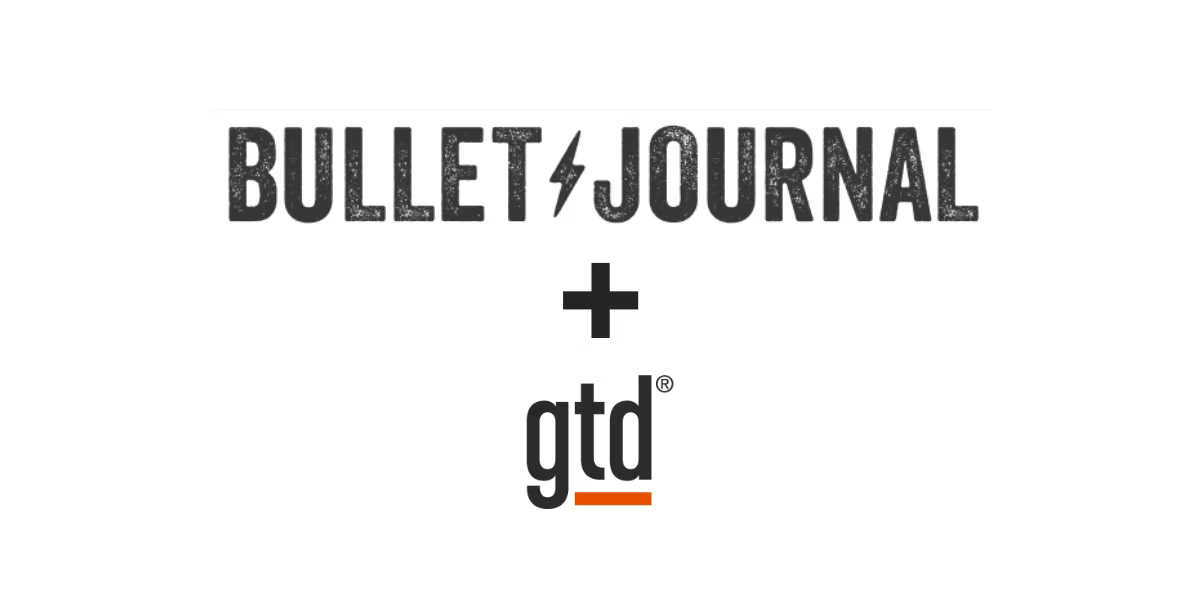The original version of this article was first published by the author on LinkedIn.
While there are all kinds of apps, software, and SaaS tools to help you organize your job search and stay on top of all of its moving parts, some folks prefer an analog solution. A great analog option to consider is a Bullet Journal, lovingly referred to as a BuJo by those who use one.
Created by Ryder Carroll, a Bullet Journal is an exceptional tool for rapid notetaking but it’s also an excellent idea capturing system which is why I recommend its usage to job seekers. At its most basic, it includes 4 components:
- Topics: You record notes and entries on nearly any topic in a BuJo, from future appointments and annual goals to books you want to read or your next vacation.
- Page numbers: Numbering your BuJo’s pages is critical because you use pagination to help you find previously recorded topics. A simple index at the beginning of your BuJo enables you to avoid where’d-I-write-that frustration.
- Short sentences: Because a Bullet Journal is all about rapid logging, short sentences are key. Though since there are no BuJo police, you can certainly incorporate longer notes or traditional journal entries if that suits your style.
- Bullets: Once your short sentences or quick notes are captured, you’ll use signifier bullets to indicate the status of each item. Bullets categories your notes as tasks, events, or notes; signifiers allow you to indicate when a task has been completed, scheduled, or migrated to another day and when an event scheduled or logged.
A Bullet Journal is organized into specialty pages which Carroll refers to as modules. The index, as already noted, tracks where key information is listed in your BuJo. A Future Log captures yet-to-occur appointments and “someday” goals that don’t fit neatly into your existing pages as yet, while Monthly and Daily Logs capture this-month and this-day details.

While there is an official Bullet Journal notebook available, the BuJo system can be used in any notebook or planner. It can be used as your sole planning system or as a key part of your planning system. For example, I use a modified BuJo in concert with a traditional planner to track all of my goals, plans, appointments, and projects. Hence, a BuJo could easily be paired with online or paper planners to help you track all of your job search data.
I have never been as organized or as attentive to my goals as I have been since I started using a BuJo. Being able to see my goals in black and white (and color) every day fuels their completion.
Bullet Journaling offers myriad benefits worthy of consideration:
- It’s completely customizable. If you’ve ever found yourself wishing you could design your own planner, consider Bullet Journaling – it allows you to track, capture, and note anything anytime in the way that best suits your individual needs and preferences.
- It’s easy to get started. All you need is a notebook or some paper and a pen. You don’t have to buy anything if you don’t want to, though many Bullet Journalists choose to invest in purpose-built journals or notebooks, good quality pens/pencils, and other tools such as templates, stickers, or stamps to quickly create pages on topics of interest.
- It’s a visual planning system. When I started using a BuJo I trialed the system to see if it would work for me. I knew at the end of a single day that it would. More importantly, I have never been as organized or as attentive to my goals as I have been since I started using a BuJo. Being able to see my goals in black and white (and color) every day fuels their completion.
- It invites creativity. If you’re a visual person, you’ll probably find yourself attracted to the millions or gorgeous pages showcased on Pinterest (go ahead, search “Bullet Journal pages” on Pinterest, but beware you will enter a deep, delightful rabbit hole which may take you hours, if not days, to emerge from).
- It keeps your data and to-dos organized. I’m a planner junkie who can never find what I want in premade planners. If that sounds like you, you will probably enjoy the customizability of BuJos and its ability to help you stay on top of your goals and action items.
- It works well with the Pomodoro technique. If you like to work on your to-dos in the short time periods prescribed by the Pomodoro technique, you’ll love how easily this practice meshes with Bullet Journaling. It’s almost as if the two systems were created to work in tandem.
- It’s perfect for list-makers. If you’re one to create to-do or other kinds of lists or just find yourself making lists a lot, a BuJo will likely suit your style. A Bullet Journal not only gives you a place to corral your lists, but makes them easy to find days, months, and years later.
- It’s ideal for goal attainment. Likewise, because a BuJo gives you a pre-established and permanent place to house your short-, mid-, and long-term goals, it’s easier to monitor and realize them. Yes, you can do this in some planners and software, but if you want your goals to go where you go and to be better looking than most online programs, then a BuJo may be a vital adjunct to your current system.
- It keeps all of your thoughts and emerging plans in one place. With a traditional planner, you may block out several hours on your calendar to work on a key project, but when you sit down to work on that project you inevitably need to pull out another notebook or sheet of paper to brainstorm or work on your ideas. Over time, these additional notebooks and sheets of paper get lost or forgotten and your brainstorm with them. With a Bullet Journal, all of your ideas and plans are kept in one notebook and are easily discoverable via your Index.
Using Your Bullet Journal to Look for Jobs

All of the above is a mere introduction to the following, though. My point is that the Bullet Journaling system can easily be adapted for use by job seekers. For example, a BuJo could be used to:
- Collect key details on your target employers all in one place. You could create a small tracker for each employer to note key contacts, challenges faced by target departments as revealed by your network, and whether you have followed the employer on LinkedIn and subscribed to their news feed, Twitter account, or blog. You can also use your BuJo to record and guide your research into company products, their key brands, their competition, and their financial health.
- Delineate, execute, and refine your Job Search Marketing Plan. Any effective plan needs to be monitored and evaluated and this is an easy task to perform in a BuJo. You could monitor your social media output, your post frequency, and key job search metrics such as the number of networking requests you make, your job board submissions, your communications with recruiters, and your company targeting efforts. For more details on the importance of a Job Search Marketing Plan, have a look at this free on-demand webinar.
- Detail your Weekly Job Search Action Plan. Each week you need to refer back to your Marketing Plan and detail your to-do’s in whatever system you use to track and implement your weekly tasks. This can be accomplished within a BuJo, of course, but it can also be achieved within your print planner.
- Take notes on networking meetings, screening calls, and interviews. Take your BuJo with you on an interview and refer to your company research during your conversation and I promise you will make a splendiferous impression. Before you get the call to appear face-to-face, your BuJo can help you track key insights from conversations and make them actionable.
- Capture your thought leadership ideas. If you are or want to be a thought leader in your industry, then you need to share your ideas with others. Capturing those ideas and flushing out blog posts is a piece of cake in a BuJo.
- Riff off of your Personal Commercials. In my experience, your pitch or personal commercials will evolve throughout your job search and this evolution is important to track. Once again, this is easy to do in a BuJo because your commercials are always within reach, assuming your take your BuJo with you wherever you go.
- Keep an eye on industry blogs, news, and social media. One thing all active job seekers should do is monitor and read industry happenings. Whether you use LinkedIn, Google alerts, or Twitter for this or another combination of aids, it’s important that this task gets completed as it will give you a constant source of inspiration for your own posts, more company targets to consider, more industry influencers to connect with, and spot opportunities to take advantage of – all of which will prevent your job search from stalling or stagnating.
Bullet Journals can be as simple, complex, black and white, or achingly colorful as you want them to be. How do you plan on using your Bullet Journal in your job hunt?
About the Author

Cheryl Lynch Simpson, CMRW, ACRW is an award-winning former resume writer, Spiritual Director, and Career Coach with a passion for journaling. Author and facilitator of Ed2Go.com’s Introduction to Journaling online course which has helped more than 10,000 participants to improve their writing skills, she is a veteran journaler with more than 50 years of experience. Cheryl is the author of Jumpstart Your Journaling, an e-book showcasing a wealth of resources, prompts, and tips for new and experienced writers, including five innovative “jumpstart” exercises to utilize when feeling stuck or blocked.






Leave a comment (all fields required)